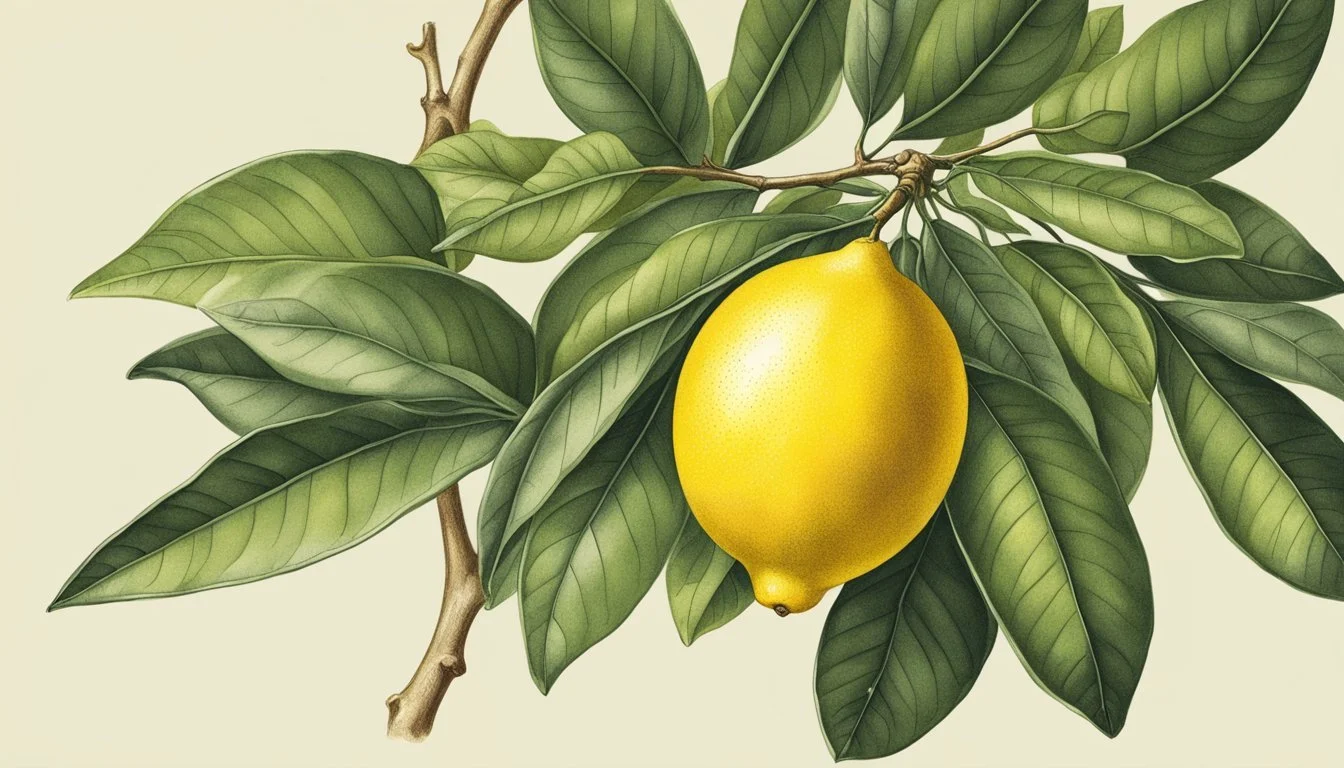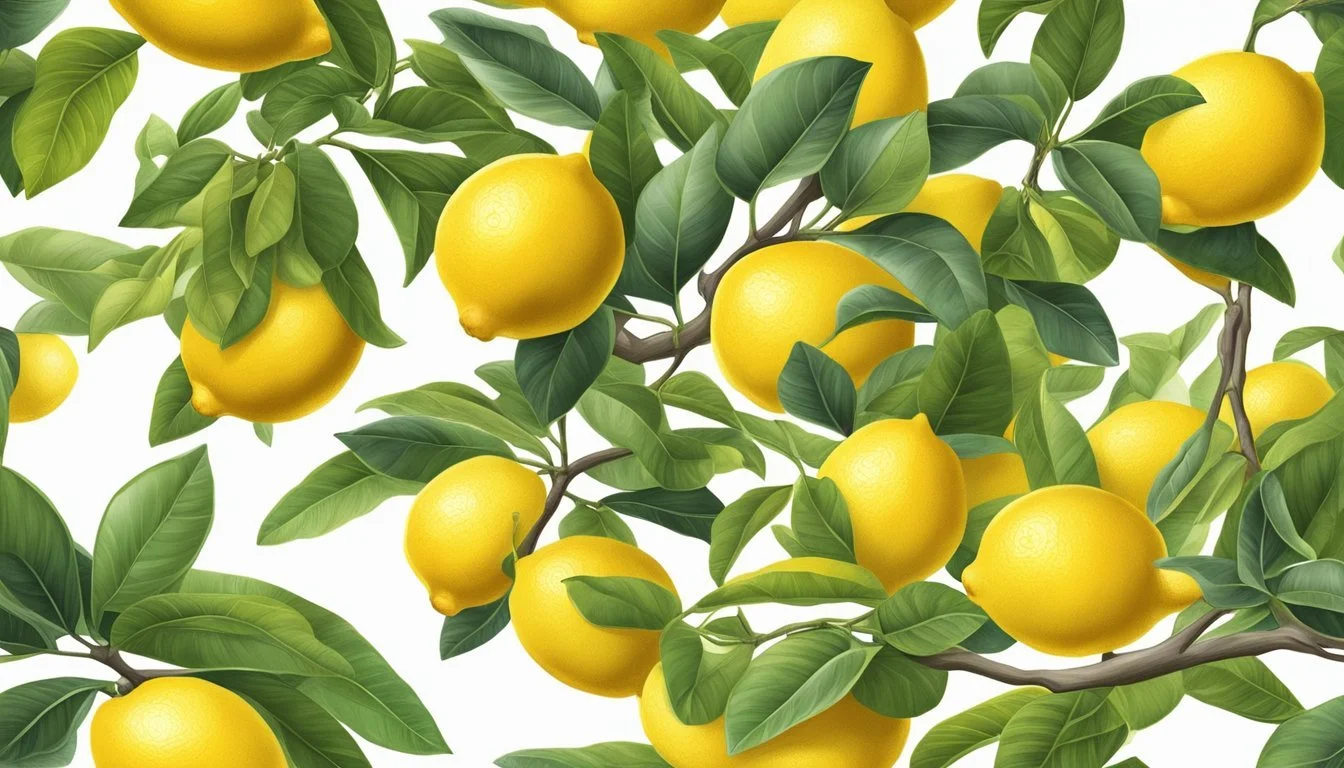How to Tell If a Meyer Lemon Is Ripe
Expert Tips for Perfect Citrus Harvesting
Meyer lemons, a unique hybrid between lemons and mandarin oranges, have gained popularity among culinary enthusiasts and gardeners alike. Knowing when these citrus fruits are ripe for picking is crucial, as it ensures the perfect balance of sweetness and tanginess that Meyer lemons are famous for. Unlike traditional lemons that are uniformly tart, Meyer lemons are prized for their sweeter, more nuanced flavor. While they may seem similar to their citrus cousins at first glance, judging their ripeness requires attention to specific details.
One of the key indicators of a ripe Meyer lemon is its color: a deep, golden yellow hue suggests it is ready to be enjoyed. However, color alone is not a definitive sign. The fruit should yield slightly to pressure, indicating that it is juicy and has a pleasant aroma that is both sweet and citrusy. To the home gardener or the professional chef, understanding these subtle differences is essential for utilizing Meyer lemons at their peak ripeness.
Key Takeaways
Ripe Meyer lemons have a deep yellow color, a slight give under pressure, and a sweet fragrance.
Optimal ripeness ensures a balance between sweetness and acidity, enhancing culinary dishes.
Meyer lemons require specific care and conditions for ideal growth and fruit development.
Understanding Meyer Lemons
Meyer lemons are a distinct variety of citrus fruit known for their unique flavor profile. This section explores the physical characteristics of Meyer lemons and contrasts them with traditional lemons to better understand their culinary applications and harvesting.
Characteristics of Meyer Lemons
Meyer lemons are a hybrid citrus fruit with several notable characteristics. They typically have a round shape and sport a smooth, deep yellow to orange-hued thin skin, which is highly fragrant when ripe. The skin also contains essential oils, contributing to their aromatic quality. The flesh of a Meyer lemon is a vivid yellow and provides a sweet and tangy flavor that is less acidic than that of conventional lemons. This less acidic nature and the thin skin of the Meyer lemon make it less shelf-stable but highly desirable for culinary use.
Shape: Round
Skin: Smooth, thin, deep yellow-to-orange
Flesh: Vibrant yellow
Flavor: Sweet and tangy, less acidic
Comparison with Traditional Lemons
When comparing Meyer lemons to traditional lemons, several differences can be observed. Where a typical lemon is bright yellow and has a thicker, more textured skin, the Meyer lemon's skin is smoother and has a deeper yellow-to-orange color. Traditional lemons are known for their intense acidity and sour taste; Meyer lemons, in contrast, have a sweeter flavor that is often described as a cross between a lemon and a mandarin orange.
Traditional Lemon vs. Meyer Lemon:
Aspect: Acidity
Traditional Lemon: High
Meyer Lemon: Lower
Aspect: Flavor
Traditional Lemon: Sour
Meyer Lemon: Sweet and tangy
Aspect: Skin
Traditional Lemon: Thick, textured
Meyer Lemon: Thin, smooth
Aspect: Color
Traditional Lemon: Bright yellow
Meyer Lemon: Deep yellow-to-orange
Aspect: Shelf-life
Traditional Lemon: Longer due to thicker skin
Meyer Lemon: Shorter due to thin skin
Meyer lemons provide a less sharp, more nuanced flavor profile than their conventional counterparts, making them particularly suited for recipes where a more delicate citrus presence is desired.
Optimal Conditions for Ripening
To achieve the perfect ripeness in Meyer lemons, understanding the specific climatic and environmental conditions that facilitate the fruit's maturation is essential. The lemon's transition from a growing phase to prime edibility is influenced by factors such as climate, sunlight, temperature, and humidity.
Climate and Seasonality
In regions with a Mediterranean climate, Meyer lemons thrive, as they require a distinct cycle of warm days and cool nights to develop properly. Seasonality impacts ripening, with lemons typically coming to fruition during the winter months. The trees benefit from:
Mild Winters: Cool but not freezing temperatures aid the ripening process.
Defined Seasons: A clear transition from the growing season to the ripening period signals the tree to allocate resources towards fruit maturation.
Sunlight and Soil Requirements
Meyer lemons demand ample sunlight and well-draining soil to ripen optimally. They should receive:
Sunlight: At least 6 hours of direct sunlight daily.
Soil: Slightly acidic to neutral pH, capable of retaining moisture yet draining excess water.
The Role of Temperature and Humidity
Temperature and humidity play pivotal roles in the ripening of Meyer lemons. For successful maturation, they need:
Temperature: Daytime temperatures around 70°F (21°C) and cooler night temperatures.
Humidity: Moderate humidity levels to ensure adequate moisture for the lemons without being excessive, as high humidity can promote fungal diseases.
Identifying Ripeness
To determine if a Meyer lemon is ripe, one should assess visual cues, texture, and structural qualities, along with the scent the fruit emits. These attributes lend Meyer lemons their distinctive appeal.
Visual Indicators
Ripeness in Meyer lemons is primarily indicated by color. A ripe Meyer lemon exhibits a deep yellow hue, sometimes with a slight orange tint. Unripe lemons may retain a green coloration, indicating they are not yet ready to be picked. Consistency in color without any green hints is a sign that they have reached full ripeness.
Texture and Firmness
The texture of a Meyer lemon can also signal its ripeness. A ripe Meyer lemon should feel firm but yield slightly to pressure, indicating juiciness without being overly soft. Overly hard lemons are often not ripe, whereas those that feel too soft may be beyond their peak ripeness.
Weight and Size Considerations
A ripe Meyer lemon will often feel heavier for its size, suggesting a juicy interior. Size can vary, but a ripe lemon is typically medium to large. Weight that correlates with size—not too light or too heavy—is another indicator of a lemon that's ready to be picked.
Smell and Aroma
The smell of a Meyer lemon is a telling sign of its ripeness. A fragrant, sweet, and distinctly citrus aroma is a clear indication of a ripe lemon. If the lemon emits an off-putting or overly sharp scent, it is likely not ready for consumption. On the contrary, a pleasant and strong fragrance often means the lemon is ripe and at the ideal point for use.
Harvesting Techniques
The careful selection and cutting of Meyer lemons are crucial steps to ensure high-quality fruit and a healthy tree yield.
Picking the Perfect Lemon
To pick a Meyer lemon, one must first determine its ripeness, which is indicated by a full, slightly soft feel, and a vibrant yellow color that may retain a hint of green. Lemons that are fully ripe should be chosen for harvesting to ensure the best flavor and longevity.
Visual Check: Look for a deep yellow color, slightly softened skin.
Touch Test: Gently press the lemon; it should yield slightly under pressure.
Pruning and Yield Improvement
Using pruning shears, one makes a clean cut to harvest the fruit while avoiding damage to the plant. Correct pruning of the lemon tree not only facilitates the current harvest but also improves future yield.
Tool Selection: Use sharp pruning shears or garden scissors.
Cutting Technique: Position shears close to the fruit's stem and snip without pulling.
Aftercare: Handle with care to prevent bruising and maintain tree health.
Proper pruning and picking techniques ensure both the immediate quality of the harvest and the long-term productivity of the Meyer lemon tree.
Post-Harvest Handling and Storage
Proper post-harvest handling and storage are crucial to maintaining the freshness and extending the shelf life of Meyer lemons. They should be stored in a way that mitigates bruising and delays over-ripening.
Optimizing Shelf Life
Temperature and Humidity: To optimize the shelf life of Meyer lemons, they should be kept at a cool temperature between 50-55°F (10-13°C). This range slows down ripening and helps maintain freshness. Humidity levels should be moderate to prevent dehydration and shriveling of the fruit.
Ethylene Management: It is important to remove ethylene from the storage environment, as ethylene can accelerate senescence and increase the rate at which lemons decay.
Storing and Refrigeration Best Practices
Refrigeration: Meyer lemons can be stored in the refrigerator to extend their shelf life. Refrigeration is especially helpful for keeping lemons fresh once they are ripe. The fruit should be placed in the crisper drawer where the temperature and humidity are more stable.
Storage Tips:
Use a ventilated plastic bag to prevent excess moisture from accumulating.
Do not wash lemons before refrigerating, as moisture can lead to mold growth.
Check periodically for any signs of overripe or damaged lemons, and remove them to prevent the spread of spoilage.
By following these specific storage and handling guidelines, one can ensure that Meyer lemons remain fresh and flavorful for as long as possible after harvest.
Using Ripe Meyer Lemons
Ripe Meyer lemons, known for their fragrant aroma and mildly sweet tang, enhance a vast array of dishes, offering a balance of flavor and quality to both sweet and savory applications.
Culinary Applications
Cooking and Baking: A ripe Meyer lemon's juice and zest can be used to infuse flavor into a variety of dishes. Citrus notes brighten savory sauces and provide a refreshing contrast in rich, creamy desserts. (What wine goes well with creamy desserts?)
Sauces: Incorporating Meyer lemon juice into sauces adds a vibrant tang that complements fish, poultry, and pasta dishes. For an exquisite béarnaise or hollandaise, the acidity of the lemon juice is perfect for cutting through the richness.
Baked Goods: The zest of Meyer lemons provides a burst of citrus flavor in baked goods. Whether it's a lemon pound cake or delicate madeleines, the zest not only infuses flavor but also imparts an enticing aroma.
Cocktails: Meyer lemon juice is a key ingredient in cocktail recipes where its sweetness and acidity can be leveraged to balance spirits, resulting in refreshing beverages like a Meyer lemon whiskey sour or a citrusy twist on classic cocktails.
Recipes and Usage Ideas
Juice: Meyer lemon juice adds a burst of freshness to any dish. It can be used in salad dressings, mixed into marinades, or even added to water or tea for a refreshing drink.
Zest: The zest of Meyer lemons can elevate the taste of desserts and add complexity to savory dishes. One can sprinkle it over roasted vegetables or mix it into a compound butter for a bright finish to grilled meats.
Table: Usage Ideas for Ripe Meyer Lemons
Usage: Desserts
Suggestion: Lemon curd, tart fillings, or garnishes for sweets
Usage: Savory Dishes
Suggestion: Lemon-infused chicken or fish, citrusy salad dressings
Usage: Beverages
Suggestion: Homemade lemonade, cocktails, or infused water
Usage: Baking
Suggestion: Lemon poppy seed muffins or citrus glaze for pastries
Expert Tips for Meyer Lemon Care
Caring for a Meyer lemon tree involves ensuring optimal growth conditions and protecting it from factors that can cause damage or fruit loss. These expert tips offer guidance to keep the Meyer lemon tree healthy and productive.
Maintaining a Healthy Meyer Lemon Tree
To promote robust growth, a Meyer lemon tree requires full sun exposure and well-draining, slightly acidic soil with a pH between 5.5 and 6.5. It is beneficial to use a potting mix designed for citrus trees, which can be made by combining equal parts sandy soil, perlite, and sphagnum peat moss.
Regular watering is crucial, but it's important to allow the soil to dry out slightly between waterings to prevent overwatering and root rot. To support the growth of strong branches, one should prune the tree to remove any dead or crossing limbs, maintaining good airflow within the canopy.
Preventing Damage and Fruit Loss
To safeguard a Meyer lemon tree, it's necessary to monitor it for signs of damage which could result from disease, pests, or nutritional deficiencies. Regular inspections every few weeks help catch problems early.
For damage prevention, one may consider applying a rooting hormone to new cuttings to protect against rot, and keeping the area around the tree free from debris to discourage pests. When fruit is nearing maturity, ensure adequate support for branches laden with lemons to prevent breakage and subsequent fruit loss.





